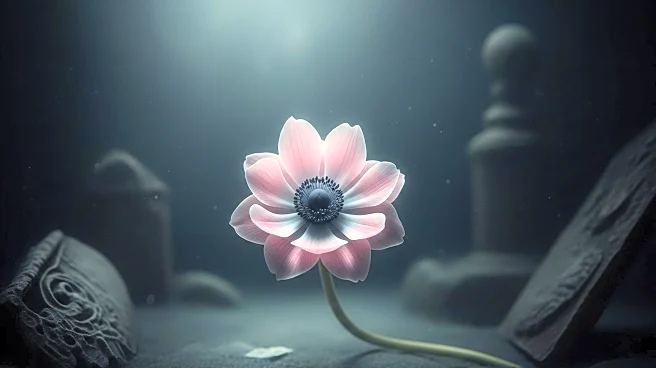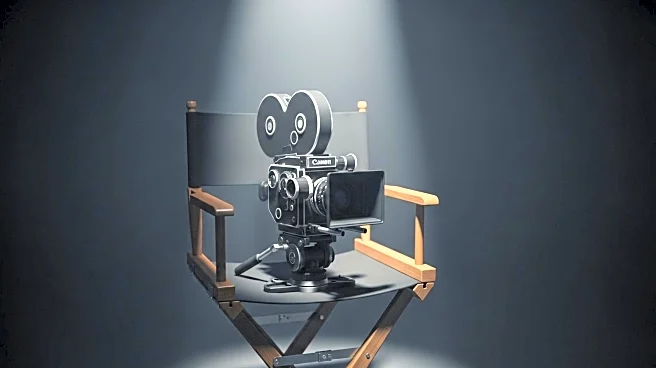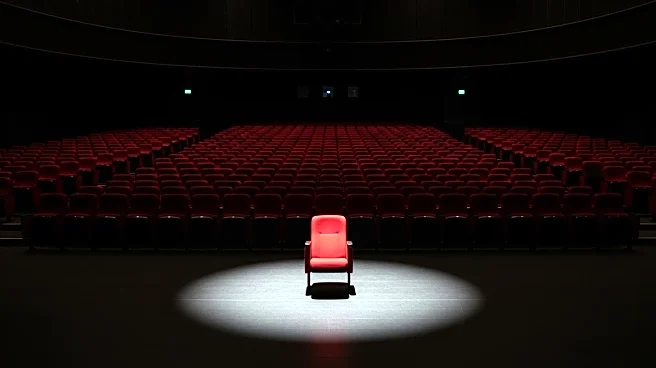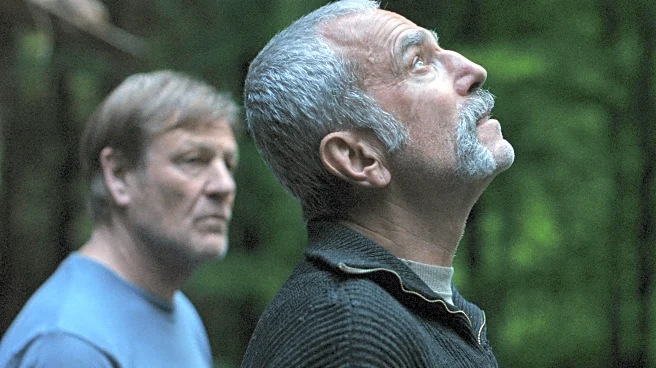What is the story about?
What's Happening?
Ronan Day-Lewis, known for his evocative paintings, has made his directorial debut with the film 'Anemone'. The film opens with a child's drawing that depicts scenes of violence and historical conflict, specifically the Troubles in Northern Ireland. This visual storytelling is a hallmark of Day-Lewis's work, which often blends everyday scenes with otherworldly elements. The film stars his father, Daniel Day-Lewis, and explores themes of brotherhood and personal history. The narrative is driven by visual cues rather than dialogue, creating a unique cinematic experience that mirrors Day-Lewis's artistic style.
Why It's Important?
The release of 'Anemone' marks a significant crossover from visual art to film for Ronan Day-Lewis, showcasing how artists can expand their storytelling mediums. The film's exploration of historical and personal themes through visual art could influence how filmmakers approach narrative construction, emphasizing the power of imagery over dialogue. This debut also highlights the collaborative nature of filmmaking, contrasting with the solitary process of painting, and may inspire other artists to explore similar transitions. The involvement of Daniel Day-Lewis adds a layer of interest, given his reputation and the film's potential impact on audiences familiar with his work.
What's Next?
Following the premiere at the New York Film Festival, 'Anemone' is set to be released in theaters on October 3. The film's reception could influence Ronan Day-Lewis's future projects, as he has expressed interest in pursuing more film work. The unique blend of visual art and film may attract attention from both art and film communities, potentially leading to further collaborations or exhibitions that explore similar themes. As audiences engage with the film, discussions around its visual storytelling and historical context may emerge, influencing future artistic and cinematic endeavors.
Beyond the Headlines
The film 'Anemone' not only showcases Ronan Day-Lewis's artistic vision but also delves into deeper themes of personal and historical trauma. The depiction of the Troubles through a child's perspective raises questions about how history is perceived and remembered. The film's visual elements, including the recurring 'creature' from Day-Lewis's paintings, invite viewers to interpret the narrative in personal ways, reflecting on the psychological and emotional impacts of conflict. This approach may encourage filmmakers and artists to explore unconventional methods of storytelling, blending visual art with cinematic techniques to convey complex themes.
AI Generated Content
Do you find this article useful?














